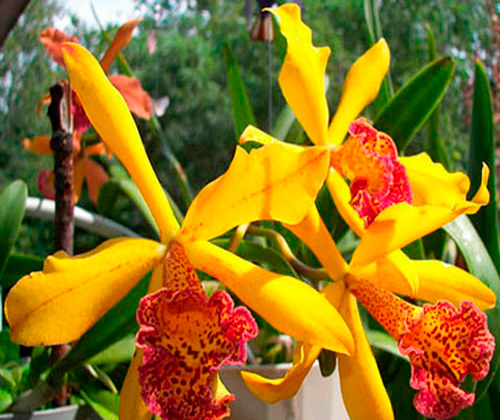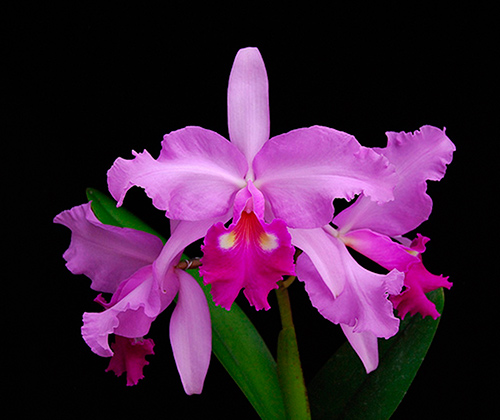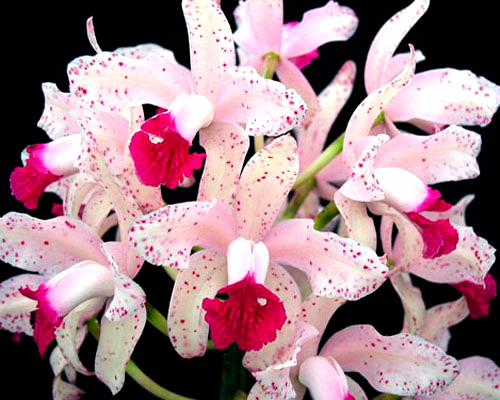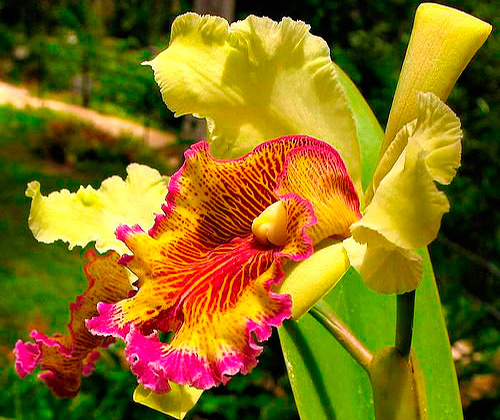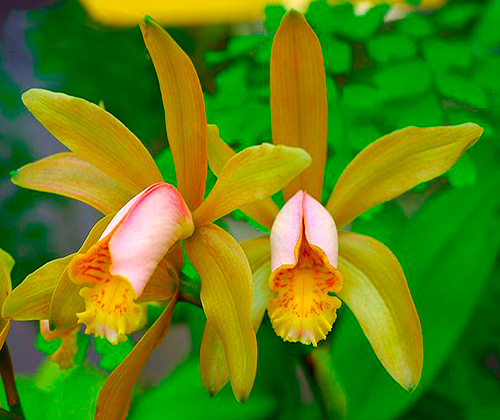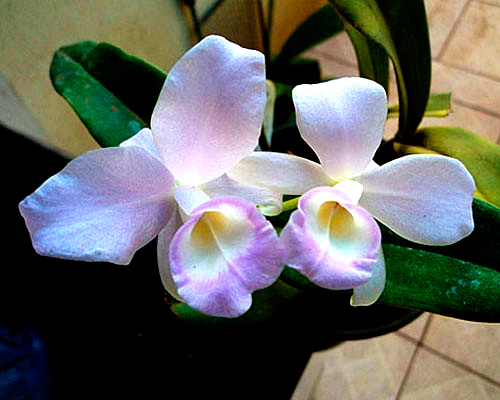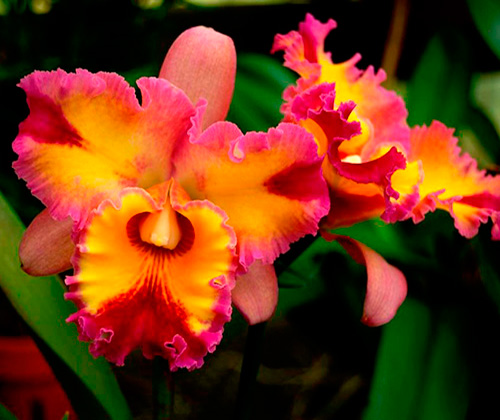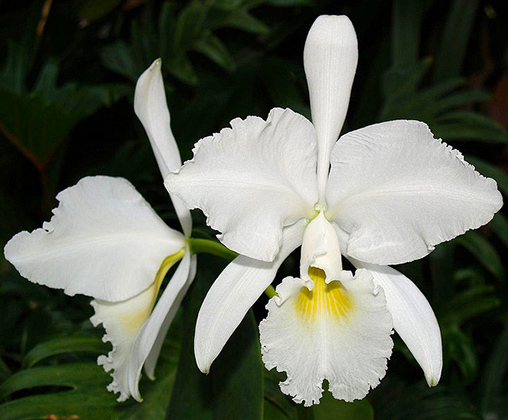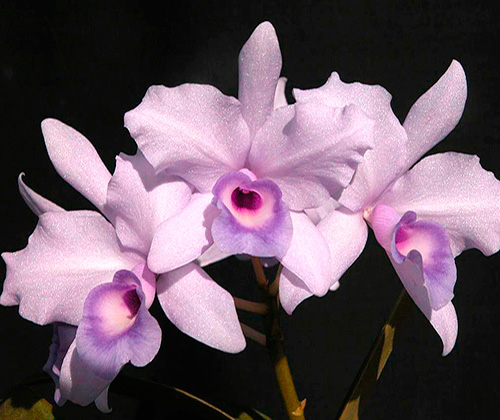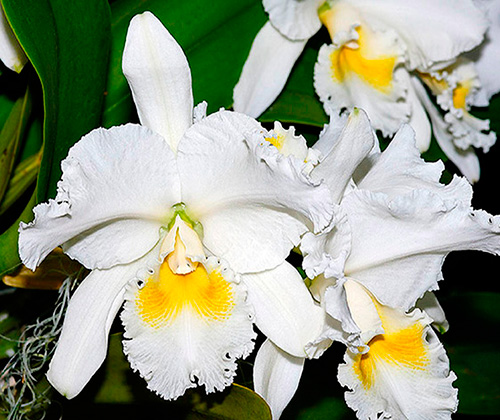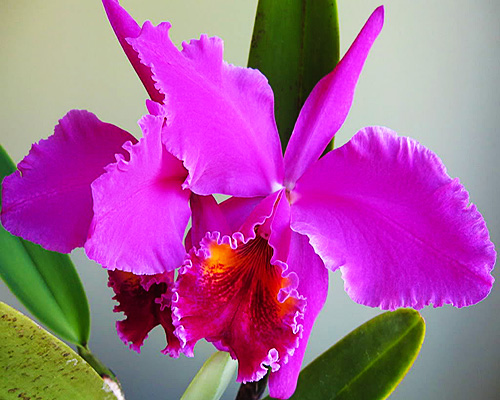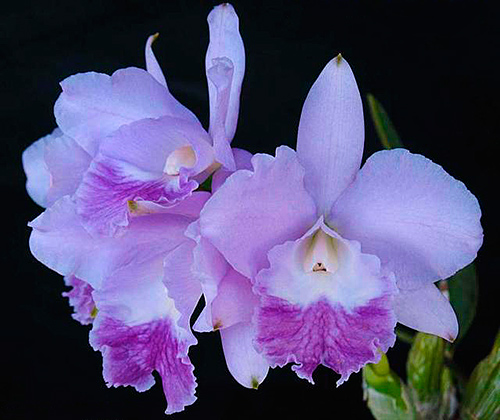Cattleya Orchid
The Orchid Queen
Cattleyas are among the most commonly grown orchids, and their culture is often used as the basis for comparison with other types of orchids. Like most other cultivated orchids, cattleyas are epiphytes, or air plants. They have well-developed water-storage organs (called pseudobulbs) and large, fleshy roots. The discovery of Cattleya was an accident. In the nineteenth century, a moss and lichen collector just grabbed some random sturdy leaves in the forest as packing material to protect his collections en route from Brazil to England. A horticulturist, William Cattley, saw the strange packing material and decided to grow it. Few years later, the strange plant produced some stunning blooms that rocked the world. The genus was therefore named Cattleya as a tribute to William Cattley, and the plant was then named Cattleya labiata. From then on, people started the crazy hunt for wild orchids in South America. Cattleya orchids are still considered the benchmark of orchids. Today, there are old-school growers that will give advice by saying “Care for this orchid just like a Cattleya except a with less light” or “this species need the same as temperature as a Cattleya".
Light
The best place in the home is a south or east, west or lightly-shaded window where the light is bright but not direct. Direct sunlight for long periods can cause burn on the leaves of most orchids. As long as the foliage is not damaged the brighter the light the better. Sunrooms, bay windows or a screened in porch are also good places to grow these. Sufficient light is important for healthy growth and flower production. In a greenhouse, about 30 to 50 percent full sun. Under lights, four 40 watt fluorescent tubes and two 40 watt incandescent bulbs directly over plants. Plants should be naturally erect, without need of much staking, and of a medium olive-green color. Dark green, limp foliage indicates too little light.
Temperature
Mature plants need a 15 to 20 F difference between night and day. Provide Nights of 55 to 60 F; days of 70 to 85 F. Cattleyas can tolerate temperatures up to 95 to 100 F if shading, humidity and air circulation are increased. Seedling cattleyas need temperatures five to 10 degrees higher than mature plants. Large standard cattleya require a night time drop in temps to promote flowering their season. If you keep your thermostat the same year round, day and night, your cattleya may not bloom. Keep out of cold, dry air while in bloom. Cattleyas especially must adhere to the common ‘wet-dry cycle’ many orchids need.
Water
Mature plants must dry out between waterings. Seedlings need more constant moisture. When watering these orchids, it is best to drench the potting mix thoroughly and wait until the center of the pot is relatively dry before watering again. Most mature orchids in fir bark-based mixes will need watering no more than once every 5 to 7 days. Smaller pots and miniatures may need water as often as every 4-5 days. The more overgrown or pot-bound your plant is the more water will be needed. If you consistently keep the potting media wet through the middle of the pot, the roots will eventually succumb to rot and the plant will start to decline.
Humidity
Cattleyas need 50 to 60 percent. In the home, place on trays over moistened pebbles. In greenhouse, us a humidifier if conditions are too dry. Some growers use "humidity trays" or trays of wet gravel around or under the plants. Pots should not touch the surface of the water.
Fertilizer
Must be provided on a regular basis because most potting media have little, and the exact fertilizer you use will depend on the mix in which your plant is growing. A good general rule is to use a balanced (10-10-10, 12-12-12 or similar ratio) fertilizer "weakly, weekly." That is, fertilize every week at one quarter to one half of the recommended dilution. All plants can be fertilized safely with a weak solution of urea-free fertilizer such as Growmore 20-10-20 or Dyna Grow Orchid Pro 7-8-6 once a month. Always water before fertilizing and remember that it is better to under-fertilize rather than to over-fertilize. With the lower light and drier conditions in the home, orchids cannot use as much fertilizer as they can use in the greenhouse and only every 6-8 weeks might be necessary for happy plants.
Potting
They should be potted in a porous, free-draining medium. The most commonly used are fir bark, shredded tree-fern fiber, various types of rock, processed coconut fiber and/or mixes based on peat moss and perlite. Whenever you repot your cattleya, never allow for more than two years worth of growing room. Sometime this means only changing an inch or so in pot size at repotting time, which should be done every two to three years in spring before mix loses consistency (breaks down). Pot firmly in media that have good aeration and ample drainage, allowing enough room for two years' growth. Miniatures and young seedlings should grow in smaller pots with finer media and larger standard sized cattleyas will prefer bigger more open media.

